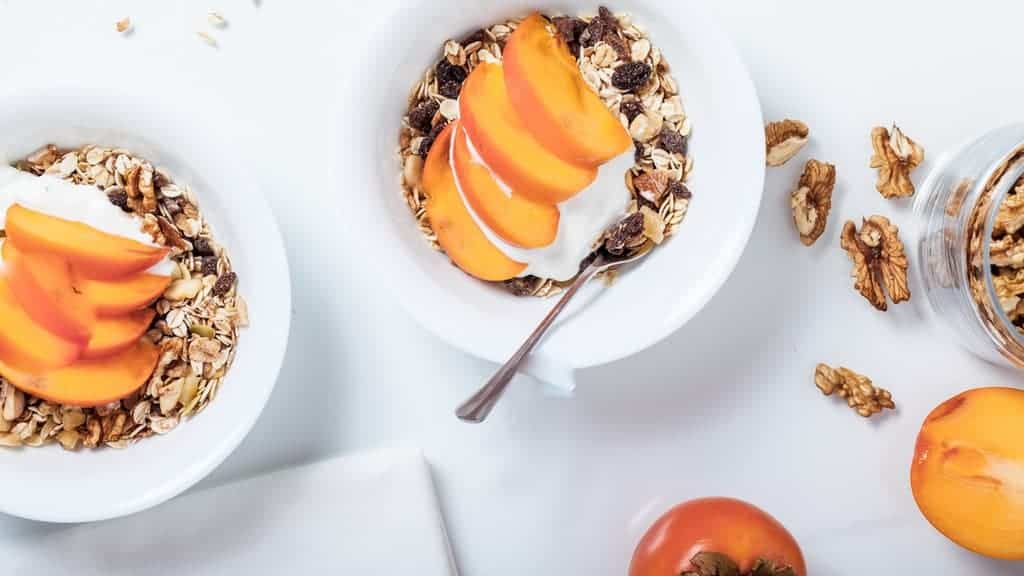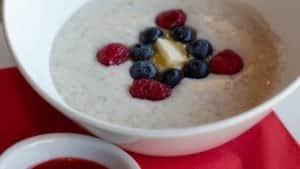Fiber is a carbohydrate that serves the role of a workhorse in the body.
Per an article published in the American Journal of Lifestyle Medicine, adequate dietary fiber consumption is linked to a host of health benefits. These include reduced risk for heart disease, stroke, hypertension, certain gastrointestinal disorders, type 2 diabetes, and certain types of cancer. Of course, this superfood is known for regulating the activity of sugars in the body, which helps to control hunger and blood sugar.
So far, so good. Except for the fact that we’re not eating nearly enough of it. In fact, according to the same article, around 95 percent of us don’t get enough fiber in our diet. Indeed, most of us aren’t even close.
In this article, we’ll discuss what fiber is, its importance, recent studies, and what you can do to get more fiber.
What is dietary fiber?
Fiber is considered a superfood by many health experts – and for good reason. Yes, it is essential for maintaining proper digestion and preventing constipation. But fiber contributes to better health in a number of other ways, too.
Proper intake reduces the likelihood of acquiring life-long diseases and helps keep our blood pressure, cholesterol, and weight at healthy levels. Most superfoods (e.g. avocados) are high in fiber too. We’ll get into this in a bit more detail later.
Dietary fiber is a plant-derived nutrient from the carbohydrate family. However, fiber is not your usual carb. Insoluble fiber, for example, cannot be broken down into sugar molecules, and therefore remains almost wholly unbroken during its journey throughout the intestinal tract. Insoluble fiber is available through certain carbs or plant-based foods like brown rice, carrots, cucumbers, legumes, tomatoes, whole grain bread, whole grain couscous, and others.
Soluble fiber dissolves in water; its main functions are to lower blood cholesterol and reduce glucose levels. Good sources of soluble fiber include apples, barley, beans, blueberries, citrus fruits, dried beans, oats, oat bran, peas, potatoes, and strawberries. The skin of fruits and vegetables is also an excellent potential source of soluble fiber.
Why aren’t we eating dietary fiber?
Let’s perform a thought experiment, shall we? Over the past 20 or so years, how many times have you heard something – maybe in the news, from a diet book, or a friend – about carbs or fat? Sugar? Dairy? Gluten? These things seem to dominate the narrative whenever diet is being discussed.
Now, how often do you hear the word fiber?
Not nearly as often – and this is not an accident. The talking heads that have tried to talk us into buying into the latest diet program rarely mention fiber, either. The reason is simple: fiber doesn’t sell. You’re more likely to get a bunch of people to buy your crappy diet product by mentioning buzzwords like fat, carbs, cholesterol, sugar, and so on.
But to be fair, America’s fiber deficiency isn’t all the fault of the “health and wellness” industry. Some of us haven’t directed the necessary attention and effort into understanding what our body needs to be healthy. Health experts believe that laypeople fall short in understanding what foods provide good sources of fiber. Many people also hold misperceptions about the recommended amount of fiber one needs. Dietary trends such as low-carbohydrate and gluten-free diets may also be contributing to widespread fiber deficiency.
But make no mistake about it – fiber is essential to not just a healthy weight, but a healthy body, period.
Fiber, the lifesaver
It is not hyperbole to say that regular consumption of this superfood saves millions of lives. Per a meta-analysis of 185 prospective studies and 58 clinical trials published in the journal The Lancet, there is a 15 to 30 percent lower mortality rate from conditions like colorectal cancer, coronary heart disease, and type 2 diabetes “when comparing higher with lower intakes of dietary (fiber).”
Let’s break down the findings of researchers at Harvard University’s T.H. Chan School of Public Health about the effects of fiber on medical conditions, some severe.
Breast cancer
A 2016 Harvard study published in the journal Pediatrics found that women who ate adequate fiber in early adulthood had significantly lower breast cancer risk than other women. Moreover, both soluble and insoluble fiber reduces the chances of breast cancer.
Although this particular study measures the effects of fiber consumption from childhood and early adolescence and the development of cancer, you will only gain from eating more fiber-rich fruits and vegetables. The anti-cancer benefits of fiber are well documented and understood, spanning across all age groups.
Constipation
Not being able to pass stools regularly or fully is the most frequently cited gastrointestinal complaint in the U.S. Proper fiber intake appears to prevent and relieve constipation. Along with that, it prevents hemorrhoids. No wonder it’s considered a superfood.
Fiber from bran is shown more effective at relieving constipation symptoms than fruits and vegetables. Foods like oat and wheat bran are probably the best bet. Just make sure to increase fluid intake when increasing fiber levels, as the nutrient absorbs water through the digestive tract.
Diverticular disease
Diverticular disease, or diverticulitis, is one of the most widespread age-related health disorders in the West. Adequate fiber intake may reduce the risk of diverticulitis by up to 40 percent.
While any type of dietary fiber may help prevent diverticular disease, the insoluble variety may be more effective.
Heart Disease
Heart disease is the leading cause of death for both men and women, taking about one in every four lives. In a long-term study of over 40,000 participants, Harvard researchers found that a high intake of total dietary fiber reduces the risk of coronary heart disease by as much as 40 percent. Multiple studies seem to confirm this conclusion.
Metabolic syndrome
Higher amounts of fiber intake also link to a lower risk of developing metabolic syndrome, an array of health attributes that increases the risk of both diabetes and heart disease. Metabolic syndrome is characterized by excess body weight (particularly around the abdomen), high blood pressure, high triglyceride and insulin levels, and deficiency of HDL (“good”) cholesterol.
Getting more fiber
We can do many things to help get more of this superfood into our diet. Here are some quick tips on how to boost fiber intake:
- Eat whole fruits (not packaged or processed)
- Eat foods with whole-grain as its main ingredient
- Instead of snacking on potato chips, try whole fruit chips. Or just eat some raw fruits or vegetables (add a bit of low-fat dressing, if you wish.)
- Get brown rice and whole-grain products instead of white bread, pasta, or rice.
- If you eat meat in soups like chili, try substituting beans or legumes instead.
Sources of fiber
As mentioned earlier, the biggest issue that many people have is simply not knowing which foods have this superfood! We’re here to help! Below are ten foods that are some of the richest in fiber!
- Almonds: Delicious and healthy, almonds contain 3.4 grams of fiber per ounce and 12.5 grams per 100 grams.
- Artichoke: Artichokes are the Rodney Dangerfield’s of the veggie world. Nonetheless, just one artichoke contains a whopping 10 grams of fiber!
- Avocados: Besides being loaded with healthy fats and other nutrients, avocados provide 10 grams of fiber per cup.
- Chia seeds: Speaking of healthy, chia seeds are about as good as it gets. In fact, they may just be the best source of fiber anywhere. Just one ounce of these seeds contains nearly 11 grams of fiber.
- Lentils: Besides being very cheap and super nutritious, lentils provide you with both protein and fiber. Just one cup of cooked lentils contains nearly 16 grams of fiber.
- Kidney beans: Like all legumes, kidney beans contain a heavy dose of protein. Kidney beans also provide around 11 grams of fiber per cup.
- Split peas: Are you a fan of split pea soup? You should be. Just one cup of split peas packs over 16 grams of fiber.
- Chickpeas: Here’s another legume that carries a good amount of fiber – about 12.5 grams per cup.
- Oats: Oats are just healthy, period. Besides carrying around some real antioxidant, mineral, and vitamin power, raw oats deliver about 16.5 grams of fiber in one cup.
- Popcorn: Popcorn is the go-to snack if you’re looking to add more of this superfood in your diet, containing about 14.5 grams per 100-gram serving.
Recommended Daily Intake
Below is a table detailing the recommended daily intake for dietary fiber across age and sex:
| Age (years) | Dietary Fiber RI (grams/day) | |
| Children | 1-3 | 19 |
| 4-8 | 25 | |
| Female | 9-13 | 26 |
| 14-18 | 26 | |
| 19-50 | 25 | |
| 50+ | 21 | |
| Male | 9-13 | 31 |
| 14-18 | 38 | |
| 19-50 | 38 | |
| 50+ | 30 |
 Final Thoughts on Dietary Fiber
Final Thoughts on Dietary Fiber
We all need dietary fiber for optimal health. Sadly, many of us opt for quick meals that sorely lack this superfood. Making a conscious effort at increasing your intake can mean improvements in your general wellness.













 Community
Community

